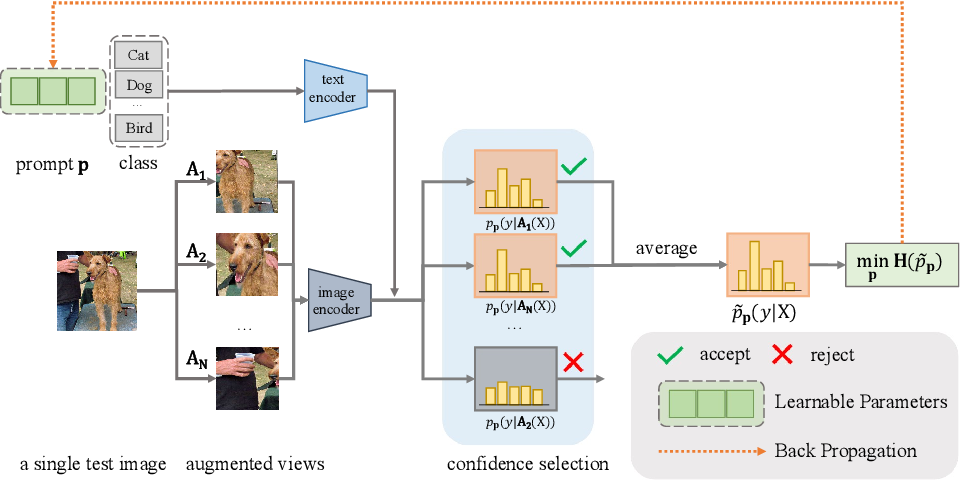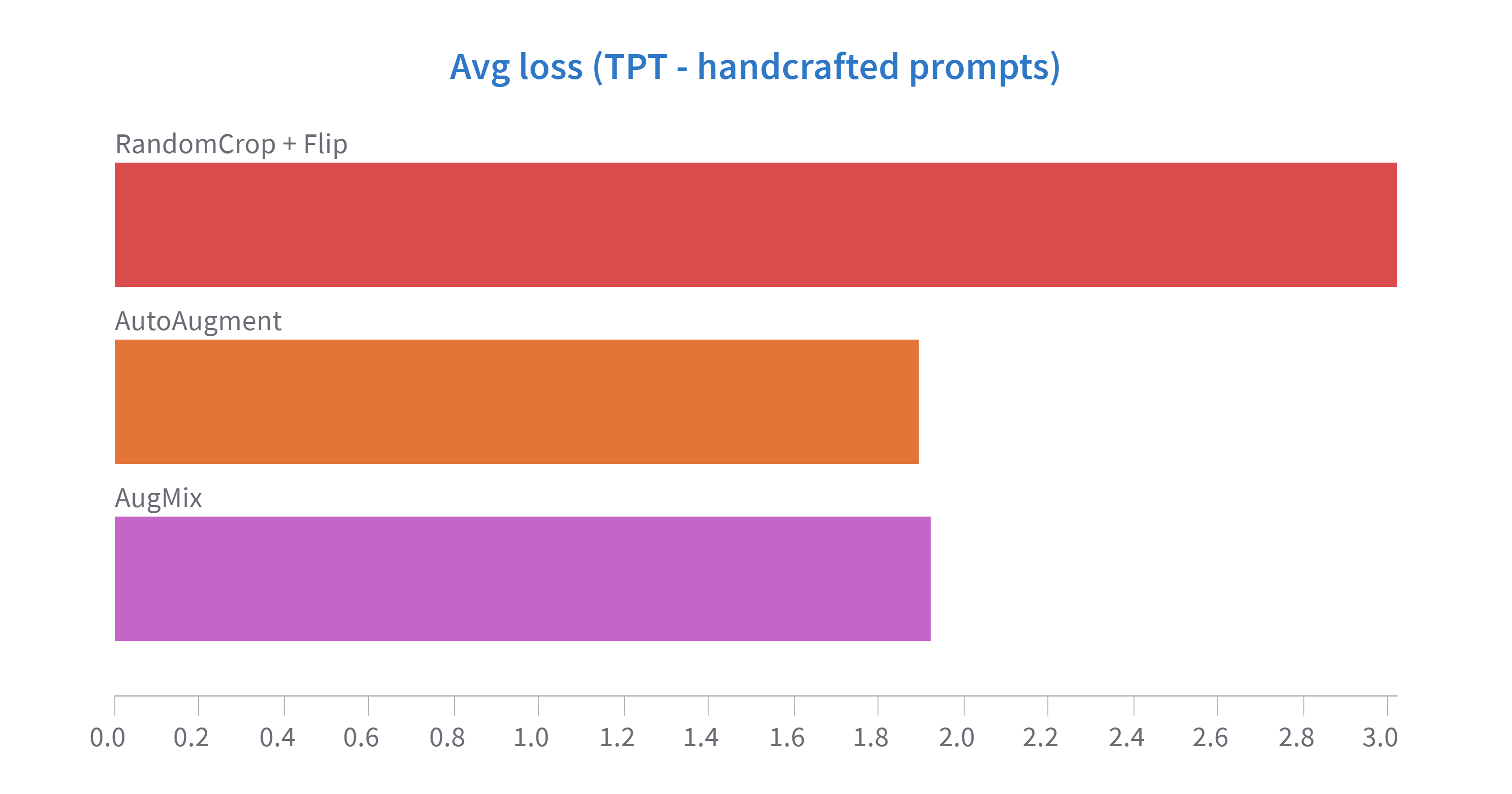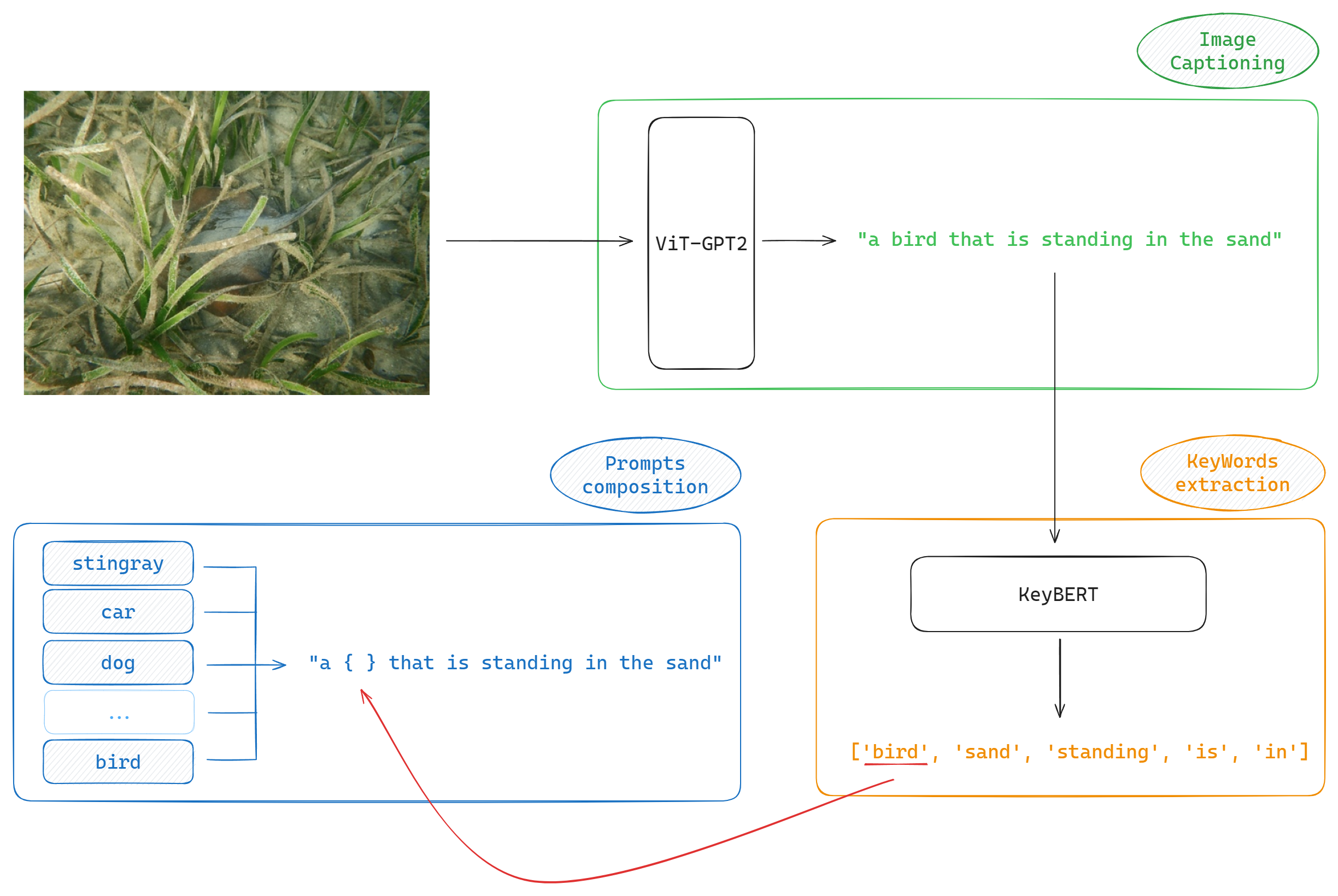TTA for Image Classification
Enhancing image classifiers with test-time adaptation techniques
This project explores Test Time Adaptation (TTA) methods to optimize image classifier performance during inference. Unlike traditional fine-tuning that requires extensive computational resources and labeled datasets, TTA adjusts models dynamically at test time, making it an efficient alternative for real-world applications.
Key Objectives
- Dynamic Model Adaptation: Enable real-time model improvements during inference without retraining.
- Innovative Augmentation Techniques: Evaluate and develop cutting-edge image augmentation strategies to improve generalization.
- Context-Aware Prompt Engineering: Refine zero-shot classification prompts to improve their alignment with input data.
- Comprehensive Evaluation: Benchmark proposed methods against industry-standard datasets like ImageNet-A.
Background and Motivation
The Challenge of Fine-Tuning
Traditional fine-tuning approaches, while effective, often require:
- Extensive computational resources for retraining large-scale models like CLIP.
- Access to large, labeled datasets that may not be feasible in many scenarios.
The TTA Advantage
TTA offers a lightweight and adaptable alternative, dynamically improving model performance during inference. This is particularly valuable for deploying models in resource-constrained environments or handling unseen data distributions.

Project Contributions
Task 1: Image Augmentation
Objective:
Enhance TTA performance through advanced image augmentation techniques.
Techniques Explored:
- PreAugment: Baseline method applying straightforward augmentations.
- AugMix: Combines multiple augmentations to improve robustness against distribution shifts.
- AutoAugment: Learns augmentation policies optimized for the dataset.
- DiffusionAugment: Leverages generative diffusion models to synthesize diverse augmentations.

Results:
Augmentations significantly improved the model’s ability to generalize to out-of-distribution data, as seen on ImageNet-A benchmarks.
| Augmentation Technique | Avg Accuracy (%) |
|---|---|
| PreAugment | 27.51 |
| AugMix | 28.80 |
| AutoAugment | 30.36 |
| DiffusionAugment | See notebook |


Task 2: Prompt Engineering
Objective:
Refine prompt templates for zero-shot classification in CLIP to enhance model alignment with input data.
Approach:
- Baseline Prompts: Standard templates like “a photo of a {label}.”
- Dynamic Prompts: Generated contextually using an image captioning system, creating prompts tailored to the specific content of the image.

Results:
Dynamic prompts showed potential for better contextual alignment but slightly underperformed compared to the baseline in accuracy.
| Method | Avg Loss | Avg Accuracy (%) |
|---|---|---|
| Baseline | - | 47.87 |
| Dynamic | 2.5711 | 42.13 |
Technical Highlights
- Backbone Model: Leveraged OpenAI’s Contrastive Language–Image Pretraining (CLIP) for its zero-shot classification capabilities.
- Augmentation Design: Introduced novel augmentation pipelines to enhance model robustness.
- Evaluation Framework: Conducted rigorous testing on challenging datasets, with insights documented in the project’s notebook.
Results and Achievements
- Developed and benchmarked advanced augmentation techniques, with AutoAugment achieving the best performance.
- Demonstrated the potential of prompt engineering for improving zero-shot classification.
- Highlighted areas for future work, including better dynamic prompt generation and augmentation fine-tuning.
Resources
- Code Repository: GitHub Repository
- Additional Details: Project Page